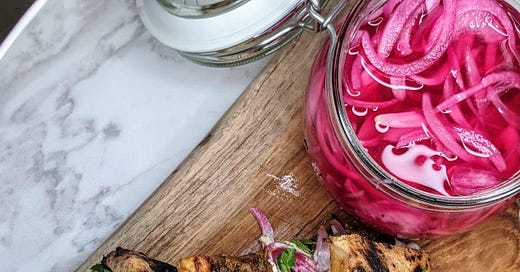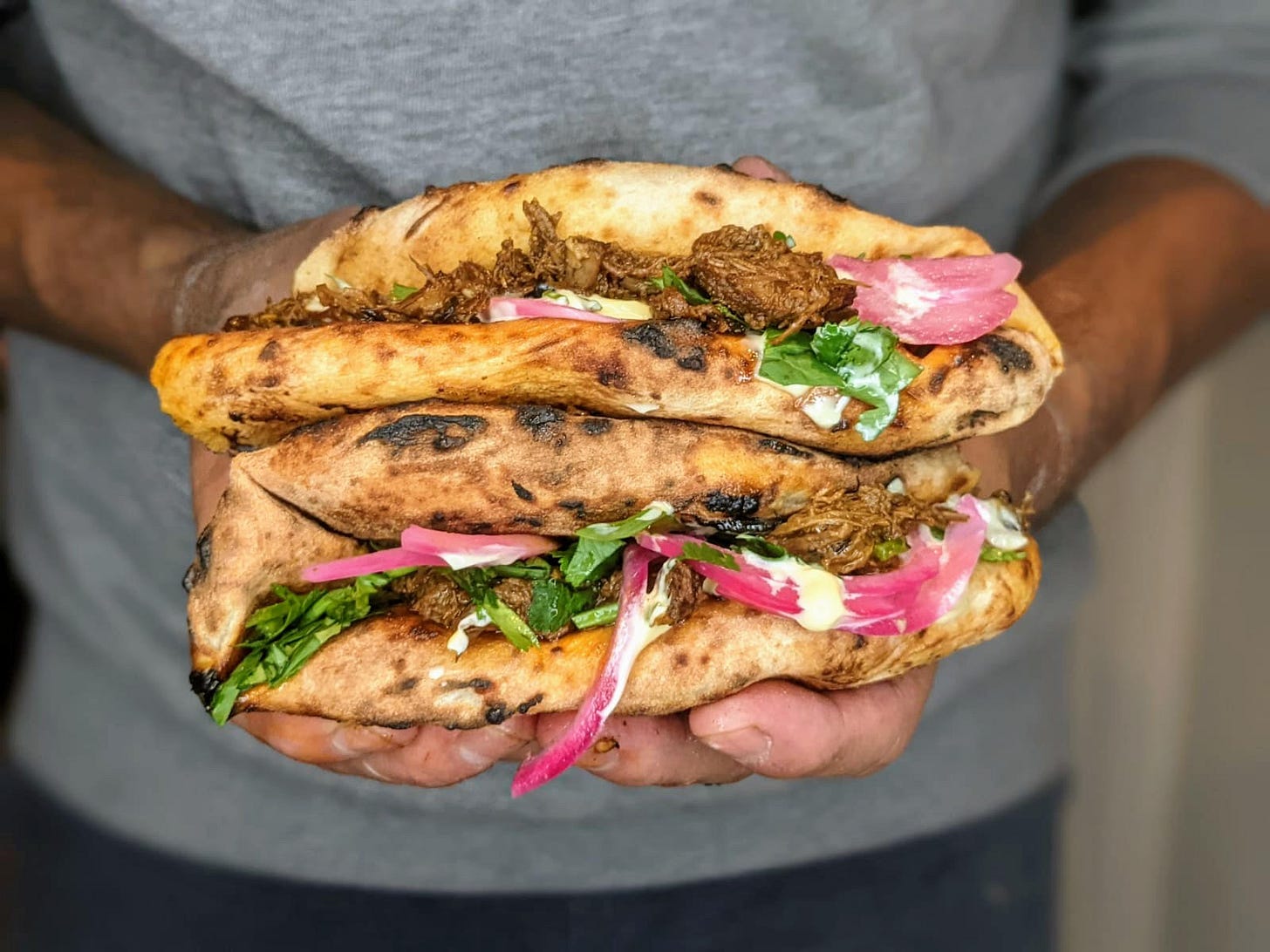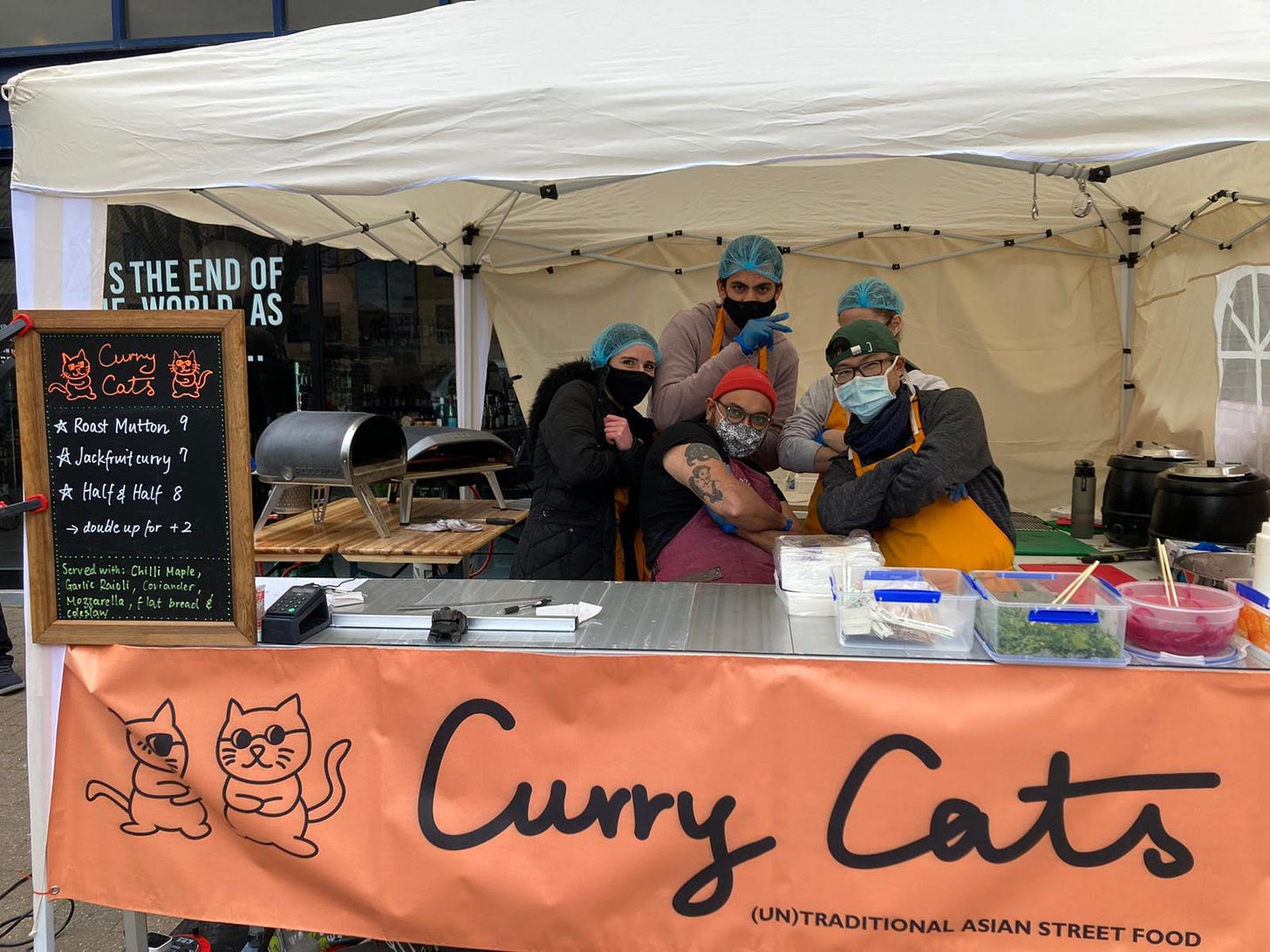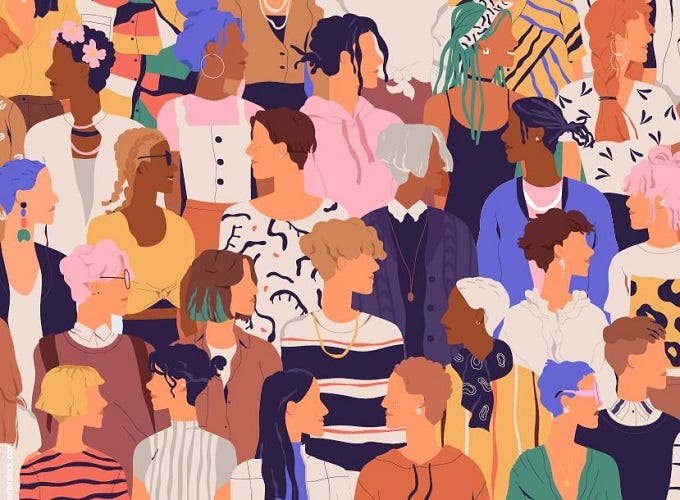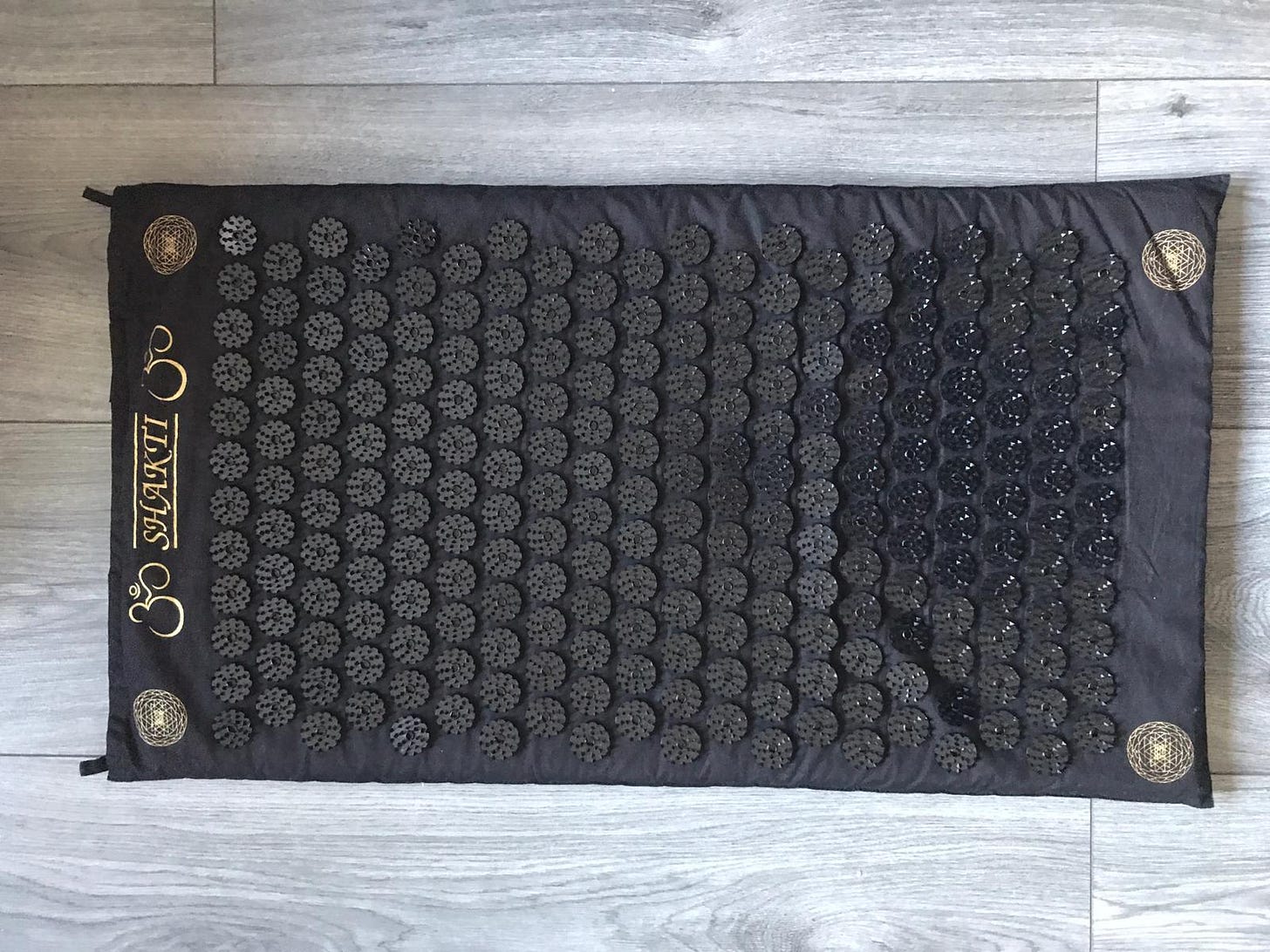Edition 7 — Spring has sprung
An interview with Curry Cats, (un)traditional Asian street food chefs, a look at the future of digital for museums and galleries, a social portrait of lockdown and 10% off Concept to Copy!
Sprout is a free monthly newsletter designed to inspire your life on and offline. Sprout newsletters inspire you to slow down, engage with life, and to enjoy reading about and consuming culture. If you want more of what you read, consider subscribing for £3.50 per month to receive bonus posts and discounts on Sprout online courses.
Spring has officially sprung and we can’t contain our delight. In London, we have been spending a lot of time lying on Hampstead Heath, drinking up the blue sky. We’ve also been cycling down quiet roads, enjoying the feeling of sunshine on our faces while we dream up our summer staycation plans. In between brunch (yes! brunch is back!) and long coffee breaks, we have torn ourselves away from smelling blossoms in the air to curate stellar newsletter posts for you.
This month we had insightful chats with the team at Curry Cats, an East London based street-food pop-up. Lucy Campbell-Molloy has been thinking about future digital horizons for museums and galleries. We all have different coping mechanisms, which is why we asked you what got you through your lockdown life. Finally, we are gifting Sprout readers 10% off the upcoming course, From Concept to Copy designed for anyone who writes.
In the coming weeks, we have an entire edition dedicated to female makers that we can’t wait to share with you, as well as freebies to give away and an eBook to launch.
Here 👏 we 👏 go 👏
Curry Cats, (un)traditional Asian street food
When lockdown hit London in March 2020, Amila Lokuge started a weekly Sri Lankan supper club delivery service. As a full-time pharmacist, it was a far cry from his day job. But, food is what he loves, and something about the timing felt right. Having catered for a handful of weddings in 2019, he was keen to scale the venture and see where it lead. “I ordered some takeaway boxes, spent a few hours on Canva making a logo and decided on my first product.” Amila got to work cooking and set up Mils’ Kitchen on Instagram. He then started to take more and more orders as they rolled in. “People really loved our Lamprais (banana leaf rice packet) so I decided to stick with that and change the curries inside it weekly.”
A few weeks in, Amila enlisted Shun Yamaguchi an old classmate to help him with dishes. Shun is a professional chef who wasn’t working at the time due to lockdown. Their collaboration soon morphed into Curry Cats. “We developed ideas together and got talking about starting a pop-up and this is pretty much how Curry Cats was born.”
Both Amila and Shun are third culture kids, having migrated to the UK when they were young. Amila, from Sri Lanka and Shun from Japan. When we spoke, each described the feeling of dissociation that comes from being an outsider in both your adopted and home countries.
The pair’s experiences of living, eating, and cooking between their global worlds plays out in Curry Cat’s fusion-style dishes. Flatbreads meets jackfruit curry. Ume-slaw meets slow-roasted mutton. The duo has created an evolving and shifting menu that gleefully cannot be categorised or easily defined. Or, as they term it: (un)traditional Asian street food.
We spoke for a while about London’s blended food scene. Establishing a food pop-up gives Curry Cats a degree of freedom to roam and set-up where they fancy. At a time when restaurants have been closed for extensive periods of time and with people encouraged to spend more time outdoors, it seems like the perfect setup. Not only do they have creative freedom in their food, Curry Cats has the freedom to choose their locale, too. In recent weeks, that has been outside To Be Consumed Wine, Leyton.
Want to get your paws on a jackfruit curry flatbread? Follow Curry Cats on IG for pop-up dates, menus, and more.
Experiencing culture in the age of digital
Words by Lucy Campbell-Molloy
Galleries, exhibitions and cultural events have long provided us with meeting spots, learning opportunities, pastimes, and escapes from everyday life. Since lockdown began in the developed world, we have seen galleries and institutions transition to digital spaces, some more successfully than others. A new era of digital has produced a wave of new possibilities that might have once seemed out of reach. Adapting and evolving throughout the past year has taught us that much more is possible when we remove barriers to art and education.
Larger institutions such as MoMA have made the transition by curating their exhibitions into Virtual Views online. They also established live digital events and interviews with artists and curators. This is a straightforward and effective route for most larger museums. However, it feels similar to their pre-Covid digital offerings. Similarly, galleries have created online replicas to their physical spaces. Although this seems like the closest possibility to walking through an exhibition, it feels like there is wasted potential.
Alma Adentro, an online exhibition hosted by Kreuzber Schlachthaus in Berlin offers this in a click and ‘walk’ experience around the virtual gallery space. The online experience is curated with photographs on virtual walls, a table of virtual champagne in the centre of the virtual private view, and has the option of ambient background noise. It seems like a dystopian video game, albeit a bit clunky. Although, in a Covid world it could almost play as a direct address to the abnormality of it all. Ultimately, the navigation is challenging and didn’t replicate the experience of a walk-through exhibition.
In London, a smoother example of virtual walk-throughs can be seen in Gillian Jason Gallery’s exhibition Heart of the Matter, showcasing female artists. The exhibition utilises a simpler set up with easy navigation and artist bios when you click on the works. The works are absolutely wonderful but ultimately it was just a virtual replica of an exhibition that would’ve been really inspiring to visit in the flesh.
Smaller-scale galleries in London such as The Showroom appeared ready to innovate into their online presence. The Showroom saw more people working from home as an opportunity. In response, they created accessible online exhibitions and workshops that brought people together from all over the world for live and recorded talks. Their inclusive website is creatively curated to utilise a range of mediums, such as pdf booklets, image galleries, and videos. The Showroom’s recent online collection, South South Think Tank brings together member panels from the South South community (an online community and resource for creatives invested in learning about the global South) to discuss their cultures, art forms and western representation. Projects like this have been made possible by our new online landscape. With more people working from home, flexible schedules, and a need for online entertainment, opportunities have opened up to encourage global and diverse participation for anyone with access to the internet.
Perhaps the takeaway from visiting online exhibitions is accepting the digital space for exactly what it is — a digital platform. If we try to replicate things that we can no longer have, it becomes harder to please the audience. When galleries present us with something new and innovative, it recreates a sense of anticipation incited by creative outlets. Additionally, it creates a whole new level of accessibility for the arts, welcoming young people, busy workers, differently-abled people and other communities that can are often neglected by the industry.
What got us through: A social portrait
It’s been a testing year for everyone. Moving in and out of lockdown has been difficult, in addition to the emotional turmoil of grief and loss. Although powerful waves of social change are uplifting and bring hope for the future, we’ve had to overcome a lot to get to this point. So, I put my journalist hat on (my lockdown must-have) and asked around to hear what items got others through. Here’s the final cut, bought to you, by you:
“I’ve always found solace in books but perhaps this time was the time I found the most comfort in them. It also helped that Bookshop.org launched so I could keep it going and support independent booksellers. 20 books and counting since January 2021!”
— Isabel Sachs
“This is my Shakti mat — and it is amazing. I was inspired to get one by a friend who swears by hers. It is amazingly helpful when my muscles are sore (especially when sitting in a not so ergonomically friendly desk/chair situation all day) and really helps with sleep. I often lie on it with a Yoga Nidra meditation or Calm app sleep story. I end up in a state where I feel almost a little high in a blissful way.”
— Madeline Kilby
“I've been lucky to have some home weights to keep me ticking over, a bike and trainers for walking and running (they have taken an absolute battering)! I've got as bored as the next person at times, but I've tried to be thankful. I have my family, my health, and a house with a garden. And no money worries. I do appreciate not everyone has been as fortunate.”
— Edmund Essilfie-Quaye
“Candles! Soothing candlelight was everything, particularly for this second winter lockdown. Soft and gentle light, watching the flame was a helpful prompt to stay present and soothe worries about what might still be to come.”
— Charlotte Barrett
“First thing that comes to my mind is Spotify playlists. I’d be lost without listening to music or podcasts.”
— Amma Essilfie-Quaye
"Independent wine delivery subscription. It was a real treat to receive new wine each week and support local businesses in the process. More often than not I loved the wine as much as I loved the beautiful label, too, which was a bonus."
— Isabelle Sinclair
“A Garmin watch. It made sure that I keep active during lockdown. Joining weekly step challenges has provided some much-needed entertainment and made daily walks a bit more exciting. The stress level tracking has forced me to take breathers through the day to ensure I stay sane!”
— Sarah Kelsey
“My work-issued safety shoes were a constant companion throughout winter lockdown. Walking was my connection to the outside world. Wearing my safety boots meant I could confidently go out in any weather knowing my feet would stay warm and dry.”
— Jessica van Staden
“HelloFresh! I found these pre-planned meals helped to schedule the week and to have something different to look forward to every night at a time when everything else seemed same-y-same-y!”
— Fiona Essilfie-Quaye
Request a comp subscription · Connect on socials · Drop us a note · Share with a friend · Write for Sprout

